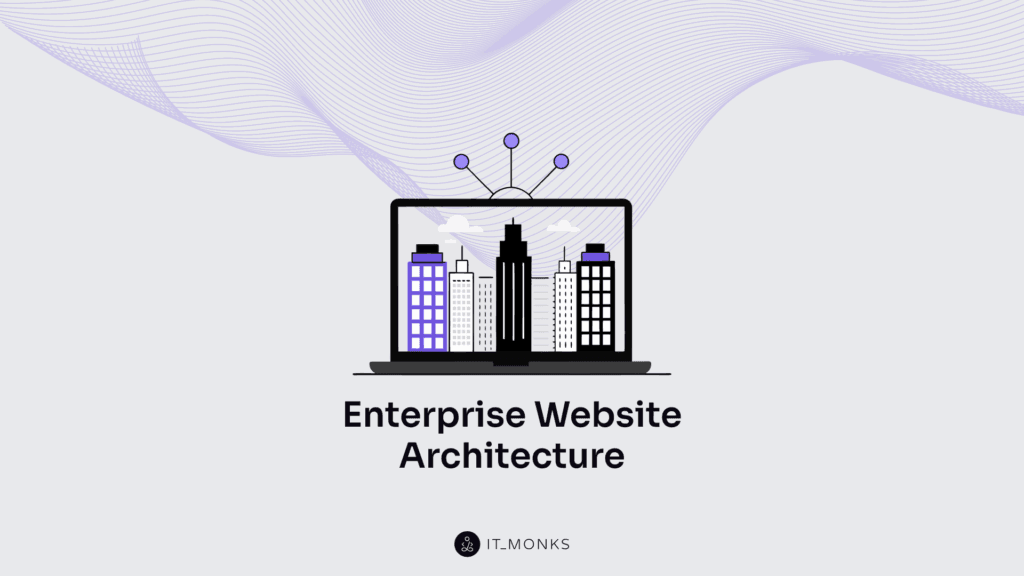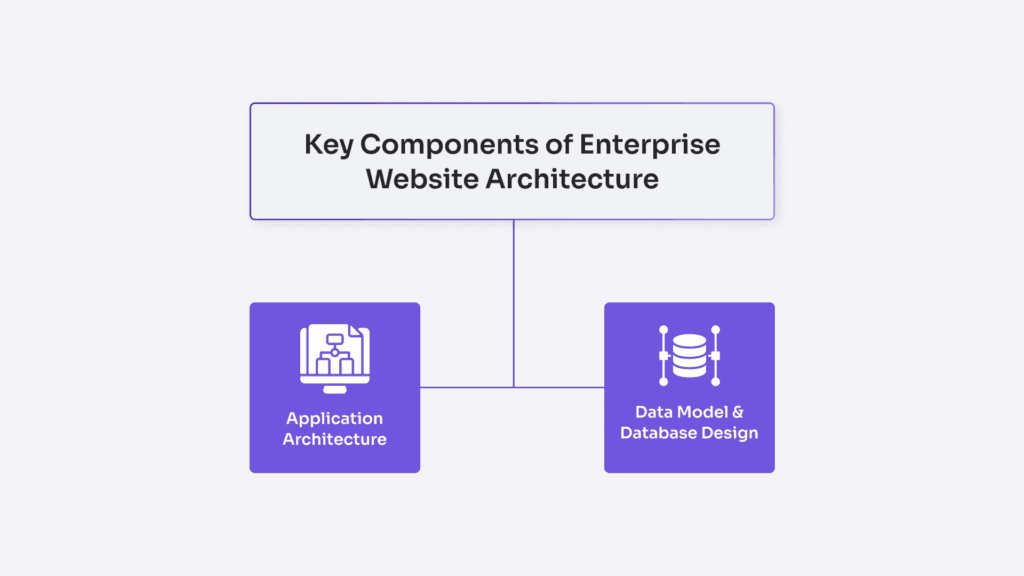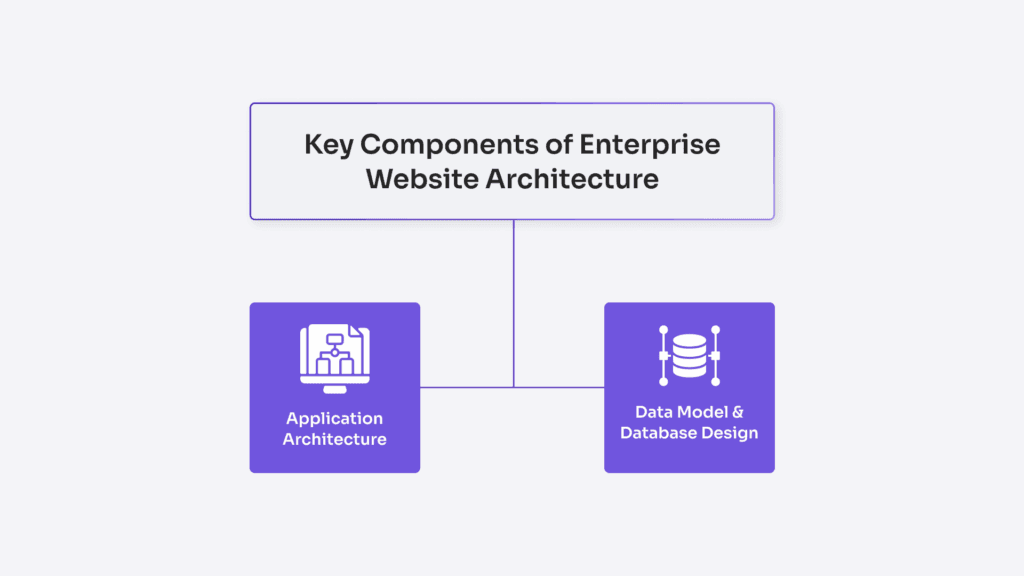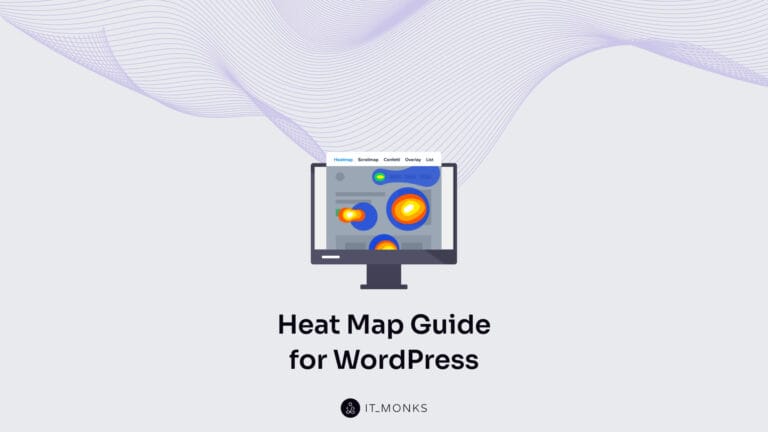Enterprise Website Architecture
Table of Contents

Enterprise Website Architecture is a structured, multi-layered design framework that defines how large-scale business websites are engineered, integrated, and operated. It orchestrates platform design, digital architecture, frontend and backend systems, and integration points to ensure scalability, security, and strategic alignment across complex business ecosystems.
At the technical layer, enterprise architecture is composed of foundational elements, including application architecture, which defines the backend and frontend logic, APIs, and service orchestration which manages information flow and execution across services; and data model and database design, which structure how content, metadata, and assets are stored, queried, and served at scale. These components ensure reliable performance, extensibility, and interoperability within enterprise environments.
Enterprise website architecture is governed by roles like IT architects, digital strategists, and infrastructure engineers, who collaborate to align development practices with long-term business goals. It includes software strategy and platform selection, determining the CMS or web framework stack, as well as web application development, which delivers the core functionality powering portals, dashboards, and digital services.
Strategically, enterprise website architecture enables digital transformation by supporting application modernization (such as moving from legacy stacks to microservices or headless CMS) and cloud-native deployments. These evolving architectures help enterprises adapt to real-time demand, regulatory pressure, and competitive shifts.
Finally, architecture planning and consulting, as well as enterprise architecture consulting, provide the analytical and advisory scaffolding necessary to implement and evolve enterprise-grade systems. These services evaluate current systems, define modernization roadmaps, and ensure alignment with governance, compliance, and performance objectives.
Key Components of Enterprise Website Architecture
Key components of enterprise website architecture refer to the modular system parts and operational layers that enable large-scale, scalable, and secure digital platforms to function reliably across multiple environments. In an architectural context, a “component” refers to a distinct functional layer responsible for core system operations, integration, or data flow, including backend services, deployment units, logic tiers, and persistence mechanisms.

These components are designed to meet enterprise-level demands for performance, governance, and extensibility. Their structure adheres to established enterprise software design principles, often requiring cross-platform compatibility, high availability, and compliance-ready configurations.
Fundamentally, enterprise website architecture is defined by how these components are structured and interact. At a high level, this includes:
- Application architecture layers – including service orchestration, business logic containers, and frontend delivery frameworks.
- Database and content schema – covering relational and non-relational data models, metadata cataloging, and object-based storage integration.
- Security and compliance units – access control, audit logs, and encryption modules built into the architecture stack.
- Deployment infrastructure – whether containerized microservices, multi-region cloud environments, or hybrid edge setups.
Each of these units must integrate into a cohesive architecture that supports long-term adaptability, facilitates integrations (for example, with CRMs or ERPs), and meets enterprise governance requirements.
Application Architecture
Application architecture is a set of patterns and techniques that define how the components of an enterprise website interact, encompassing structural choices, functional organization, and strategic alignment with business goals.
Enterprise application architecture is categorized into monolithic, layered, decoupled, and headless models.
Monolithic architecture is a single-deployment model ideal for tightly controlled deployments with limited scaling needs, such as internal enterprise dashboards or legacy intranet portals.
In contrast, decoupled and headless models separate content management from the delivery layer, enabling flexible UI development across multiple channels.
Headless CMS setups are typically used in digital experience platforms (DXPs), where content needs to be distributed via APIs to web apps, mobile devices, and kiosks.
Functionally, application architecture defines routing logic, service orchestration, and modularity. Modern enterprise builds demand containerized services, REST/GraphQL API gateways, and clear system boundaries to enforce operational resilience and scalability. Middleware integration handles authentication, logging, and policy enforcement.
Use cases include API-first content platforms, ERP-integrated commerce portals, and compliance-focused intranets. Choosing the right application architecture depends on technical scale, governance models, and long-term extensibility. Learn more in our full guide to application architecture models.
Data Model & Database Design
A data model is a formal structure that defines how enterprise website content, users, and interactions are organized, stored, and related.
In enterprise-grade CMS deployments, the enterprise data model and database design typically encompass content types (e.g., pages, case studies, assets), user roles (e.g., editor, reviewer, admin), and taxonomy structures (e.g., regions, business units). WordPress handles this via custom post types, custom taxonomies, and field management tools like Advanced Custom Fields (ACF).
At the logical layer, a robust data model for enterprise websites includes clearly defined entities, such as pages, users, media assets, and their relationships, cardinalities, and constraints. These structures map directly to business logic and drive personalized user experiences and content workflows.
The physical layer deals with database design strategies that ensure enterprise-grade performance. This includes schema normalization, query optimization, and mechanisms like indexing, replication, and, where needed, sharding. In high-traffic WordPress setups, these practices are crucial to keep your enterprise DB from imploding under pressure.
The database design impacts many areas, including compliance reporting, such as GDPR audit logs. It also plays a role in enterprise data recovery and long-term scalability. Tools such as Advanced Custom Fields (ACF) and custom post types help meet complex schema needs in WordPress. Headless CMS models benefit from architectures that support REST and GraphQL.
Strategic Layers of Enterprise Architecture
Enterprise architecture strategic layers are the decision-making framework that governs how technical systems are selected, structured, and executed to meet organizational goals. It transforms foundational systems into intentional, scalable, and governed environments by embedding logic and leadership into architectural decisions.
Strategy in enterprise architecture exists across several interlocking domains:
- Platform strategy determines scalability, resilience, and governance. For instance, choosing a containerized cloud-native setup over legacy hosting directly affects system elasticity, compliance, and multi-environment deployment agility.
- Software strategy defines the stack composition and operational model. Whether the architecture supports open-source CMS platforms like WordPress or a proprietary DXP affects integration depth, version governance, and developer ecosystem compatibility.
- Development strategy influences execution speed and control. Agile, in-house workflows support rapid iteration and domain expertise, while outsourced waterfall models often aim for compliance-heavy, cost-optimized delivery pipelines.
Each layer not only influences the technical blueprint but also dictates stakeholder coordination, risk posture, and the long-term adaptability of the enterprise system.
Two key outcomes of strategic architectural planning include the software stack selection and the model of web application development adopted.
Software Strategy & Platform Selection
Software strategy and platform selection is a foundational layer that governs the long-term viability, scalability, and compliance posture of enterprise website architecture. It determines how software stacks are composed and optimized for evolving enterprise needs.
Strategic platform decisions — including open-source vs enterprise-grade CMS (e.g., WordPress vs Adobe Experience Manager), build vs buy approaches, and modular vs monolithic architectures — define the degree of platform interoperability and development agility.
Selection must support integration ability, ensuring that chosen platforms can communicate seamlessly across enterprise CRMs, ERPs, and data ecosystems. Evaluating scalability, compliance with GRC frameworks, and minimizing vendor lock-in is non-negotiable.
Ultimately, the enterprise software strategy shapes the enterprise software portfolio, influencing CMS selection, plugin orchestration, and the architectural flexibility to support future modernization efforts.
Web Application Development
Web application development is a core execution phase within enterprise architecture where strategic platform selection guides development approaches, and architectural choices inform deployment and scaling models. Platform decisions, such as monolith vs. headless CMS, support how code is deployed across environments.
In enterprise builds, development is often shaped by Agile methodologies for iterative delivery, although some organizations still adhere to the Waterfall approach. Teams are often structured as full-stack units for tighter control or as decoupled frontend and backend teams when specialization takes priority.
Modern enterprise CMS platforms, such as WordPress, evolve from basic content systems into fully fledged web applications through plugin orchestration, user roles, custom post types, and REST/GraphQL APIs. This supports essential attributes, such as modularity, secure authentication flows (SSO, MFA), and admin panels with role-based dashboards.
The DevOps pipeline, including CI/CD workflows, automated testing, and staging gates, ensures stable releases across complex environments. Web app logic is often dictated by data models designed earlier in the architecture, while the chosen platform dictates extensibility, deployment cadence, and update management.
For full insights, read our complete guide on enterprise web application development.
Evolving Architectures in Modern Enterprise Environments

Evolving architectures in enterprise website systems is a strategic response to constant shifts in technology, user behavior, and operational priorities. This approach is not static; it adapts, transforms, and redefines itself as platforms mature, tools diversify, and business models expand.
At its core, evolving architecture is a process where rigid legacy setups give way to adaptive, modular systems. Web platforms transform to meet digital transformation demands, prioritizing scalability and integration over fixed-functionality frameworks. Enterprise architecture evolves as user expectations shift toward real-time data, responsive design, and connected experiences.
Digital transformation efforts require scalable, flexible web architectures. CMS platforms like WordPress develop into enterprise-grade systems by adopting decoupled strategies and API-driven extensions. Legacy systems undergo modernization to align with cloud-first, service-oriented environments.
In this model, change is both a cause and a consequence: digital initiatives push architecture forward, while new architectures drive further innovation.
Enterprise website architecture begins its transformation with digital modernization and moves even deeper into continuous evolution through application modernization strategies.
Digital Transformation Context
Enterprise Website Architecture is foundational to digital transformation initiatives. It defines the structure and interaction model through which digital experiences, business processes, and systems connect. Digital transformation refers to the systematic evolution of how enterprises operate and deliver value by leveraging digital technologies, typically starting at the application and platform levels.
Digital transformation for the enterprise begins with web platform re-architecture. Modern enterprise websites are no longer static information hubs. They are dynamic platforms that require integrated frontend and backend systems to support real-time content delivery, user interactions, and system-wide interoperability.
One of the primary drivers of this transformation is the implementation of robust Content Management Systems (CMS) or Digital Experience Platforms (DXP). An enterprise CMS enables faster transformation cycles by centralizing editorial workflows, content governance, and personalization capabilities. These platforms help unify fragmented content silos and align publishing with strategic objectives.
Equally important is the shift toward API-driven ecosystems, where systems communicate through secure, structured interfaces. APIs support platform interoperability, allowing the enterprise website to connect with CRM systems, ERPs, analytics tools, and customer-facing portals. This integration is essential for enabling continuous process automation, responsive data flows, and scalable content delivery.
As transformation advances, enterprise architecture adapts. The introduction of new digital workflows, service models, or engagement strategies often requires revisiting the architectural foundation, extending the schema, evolving backend logic, or reconfiguring deployment pipelines. In this way, transformation drives changes in web architecture, reinforcing the role of the enterprise website as both a strategic asset and a responsive framework for digital evolution.
Application Modernization
Application modernization restructures outdated enterprise systems to function within modern digital architectures. It’s a structural alignment process, where strategy guides it and architecture supports it.
Legacy applications often require adaptation to current infrastructure standards. These systems undergo replatforming to operate on updated platforms without a full code overhaul. When speed is more important than customization, rehosting (or “lift and shift”) moves workloads to the cloud without changing the application. More complex changes include refactoring, which improves the internal code for easier maintenance. Another option is rebuilding, which creates the application anew to fit modern needs.
Modern platforms require cloud-compatible applications. To meet this requirement, modernization efforts commonly support headless CMS architectures, decoupling content delivery from legacy monoliths. Integration occurs through API wrappers, legacy systems are exposed via service layers to interact with microservices, and modern CMS frameworks.
In this context, cloud-native transitions are a necessity. Whether targeting private cloud deployments or hybrid cloud strategies, modernization evolves systems into scalable, resilient architectures.
Modernization directly improves architecture scalability. However, the process is not isolated; it depends on architectural planning and the alignment of long-term digital strategy. Without that foundation, the result is just a newer version of the same limitation.
To learn more, dive into our guide to application modernization strategies.
Architecture Planning & Consulting
Architecture planning and consulting are critical phases that define and govern technical direction across the enterprise. These functions integrate systems design with strategic planning to support enterprise alignment from the outset.
Architecture planning identifies dependencies, establishes boundaries, and guides infrastructure decisions before development begins. In parallel, architecture consulting provides the technical governance required to execute complex systems with clarity and consistency. These services align platform design with business intent, reduce execution risk, and maintain long-term viability.
In enterprise environments, both are non-negotiable for achieving cohesion across application architecture, data models, and software strategy.
Enterprise Architecture Consulting
Enterprise Architecture Consulting is a structured service that analyzes and guides the architecture strategy across enterprise systems and digital platforms. This service is provided by enterprise architects, consultants, and systems integrators. They use specialized methods to align business functions with technical execution.
Consultants assess current-state architecture through deep platform and integration audits. They design scalable target-state systems to support digital modernization. The consulting process improves business-technology alignment by establishing structured change plans and platform evaluations, often including CMS, middleware, or DXP systems. Architects define governance and compliance frameworks that reinforce operational consistency and policy control.
Key service areas include architecture assessments, target-state design, integration and scalability planning, and governance modeling. Results include optimized digital infrastructure, standardized data flows, and enforced architectural principles. These guide future development in cloud-based solutions and legacy system transitions.
Contact
Don't like forms?
Shoot us an email at [email protected]

Send a Project Brief
You need to load content from reCAPTCHA to submit the form. Please note that doing so will share data with third-party providers.
More InformationYou are currently viewing a placeholder content from Turnstile. To access the actual content, click the button below. Please note that doing so will share data with third-party providers.
More InformationYou are currently viewing a placeholder content from Facebook. To access the actual content, click the button below. Please note that doing so will share data with third-party providers.
More InformationYou are currently viewing a placeholder content from Instagram. To access the actual content, click the button below. Please note that doing so will share data with third-party providers.
More InformationYou are currently viewing a placeholder content from X. To access the actual content, click the button below. Please note that doing so will share data with third-party providers.
More Information

